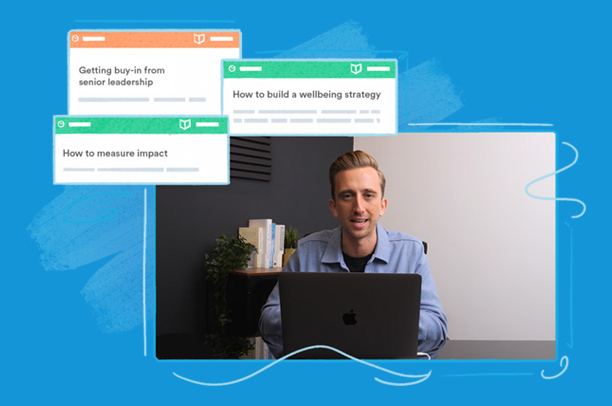Safeguarding might sound like one of those formal, policy-heavy terms… but at its heart, it’s about people. It’s about making sure everyone feels safe, respected, and protected at work. Traditionally, safeguarding has been seen as something that belongs in schools, healthcare, or social care. But the truth is, the workplace is one of the most common places where signs of harm, neglect, or abuse are first noticed or disclosed. And yet, it’s one of the least prepared environments to respond.
Why safeguarding can no longer be ignored
Over the past few years, workplaces have changed dramatically. Conversations about mental health and wellbeing are now more open than ever, and that’s a good thing. But with openness comes responsibility.
When employees are encouraged to bring their whole selves to work, we must also be ready for what that means in practice. Managers, HR teams, and Mental Health First Aiders are increasingly the first people colleagues confide in when something isn’t right. Whether it’s concerns around domestic abuse, self-harm, exploitation, or workplace bullying, these are safeguarding issues. Knowing how to respond appropriately is absolutely key.
Ignoring these situations doesn’t just leave individuals vulnerable; it exposes organisations to reputational and legal risk.
The misconceptions that often hold businesses back
Many people still think safeguarding only belongs in schools or care settings, to protect children or vulnerable adults. But that’s not the case. It’s just as important in the workplace.
This was made clear through the Care Act 2014, which came into effect in April 2015. Before then, the term “vulnerable adult” was commonly used in policies and guidance. The Care Act replaced it with “adult at risk” — a term that recognises something really important: anyone can be at risk depending on their circumstances.
In a work setting, that might look like an employee experiencing domestic abuse, struggling with their mental health, or being taken advantage of financially. These aren’t just “personal issues”, they’re safeguarding concerns. And every organisation has a role to play in recognising and responding to them.
Additionally, another common misconception is “safeguarding doesn’t apply to us.” In reality, safeguarding is already happening in your organisation, the question is whether it’s being handled safely, consistently, and in line with your duty of care.
The cost of doing nothing
Safeguarding concerns aren’t always obvious. They can start with an offhand comment, a change in behaviour, or a conversation that simply doesn’t sit right. But if these early warning signs are missed, the consequences can be serious. Someone at risk might not get the support they need when they need it, and from an organisational perspective, failing to act can breach duty of care and lead to serious reputational or legal exposure.
We recommended watching the replay below, diving even deeper into safeguarding and it’s role in the workplace…
Building a culture of safety and confidence
Creating a safeguarding culture starts with awareness. Too often, organisations assume safeguarding is already covered somewhere within HR or health and safety policies. But without defined ownership, that “policy” is just words on paper.
The first step is to ask:
- Do we have a safeguarding policy that applies to our employees?
- Do people know what it says and who to contact?
- Do our managers, HR teams, and Mental Health First Aiders have the confidence to respond if a concern arises?
From there, appointing a Designated Safeguarding Lead (DSL) or a small group to share the responsibility is key. Having a clear reporting process and communication plan transforms safeguarding from a reactive response to a proactive, preventative culture.
Fixing these gaps through training
We see consistent theme: very few businesses have robust safeguarding policies or trained leads before we start working with them.
Our data shows that around 2.5% of conversations logged by Mental Health First Aiders include safeguarding risks, and that number is likely higher when you account for unrecognised concerns. That means these conversations are already happening and often without the right support or understanding in place.
Training is the first step to bridge this gap. It gives employees clarity on what counts as a safeguarding issue, confidence to act appropriately, and the knowledge to protect both others and themselves.
Workplace safeguarding training fit for the real world
We know that most traditional safeguarding courses are built for care or healthcare settings. They rarely reflect the realities of other workplaces – from offices and on-site operational roles to hybrid and remote environments – where risks are often more subtle and conversations unfold in everyday moments.
That’s why we created our own CPD-accredited course. Delivered as flexible, self-paced learning, our Safeguarding Adults in the Workplace course helps HR, managers, and Mental Health First Aiders recognise, record, and report safeguarding concerns with confidence. In building the course, it was very important for us to ensure we provide real workplace examples, avoid overwhelming jargon and provide clear guidance that individuals can apply instantly.
Don’t get caught in reactive mode
We are starting to see the HSE and BSI improve standards and increase scrutiny around duty of care, meaning organisations should proactively address any gaps. As our very own Kayleigh Atkinson (Senior Manager, Training & Development and Safeguarding Lead) puts it:
“The more we encourage open conversations about wellbeing, the more likely it is that risks will surface. Safeguarding can’t be an afterthought, it has to be part of how we protect and support our people every day.”
Safeguarding isn’t about box-ticking. It’s about creating safer, more supportive workplaces. It’s about recognising that harm can happen anywhere, and that every employee deserves protection and a clear process to rely on. For any businesses ready to take the next step, explore our workplace safeguarding training, giving your people the knowledge, structure, and confidence to act when it matters most.








